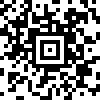What are we doing for disk imaging theses days?
dd ?
Ones I have used: GNOME Disks’ create and restore image features. Possibly Mint’s
mintstickfor writing a distro’s.isoout to a USB stick. I am not too sure on that.I assume old-school
ddstill works as well, which might be a better option for scripted backups or minimal systems.Ddeez nuts
Clonezilla and Rescuezilla The Clonezilla method takes a bit time to get used to (but I like it). Rescuezilla comes with a GUI.
To add to this. Take a look at the fog server project. It allows you to PXE boot and pull and push images in a automated way.
Take a look at the fog server project.
Thanks. https://fogproject.org
cpDefinitely ddrescue. Unlike traditional dd, it can deal with failing drives, it’s operation is resumable, and has some other features that’s helpful. I would recommend using it even if your drive is fine.
What it produces is a byte for byte copy just like dd.I use FSArchiver. There’s nice list on Archwiki.
Just to throw another option out there,
partclonewill only copy data that is being used in a partition, without all the empty space. I don’t believe it helps for encrypted partitions, but you could always just image the unencrypted filesystem withpartcloneto a drive with full disk encryption to work around that (and still prevent storing data unencrypted). Saves a lot of space.Also, in the context of backups, I often prefer to use
btrfs sendto create and update backups through snapshots quickly and efficiently instead of imaging (though of course that requires you to use btrfs). Full imaging is pretty inefficient for my needs, and takes a lot of time.cp.


